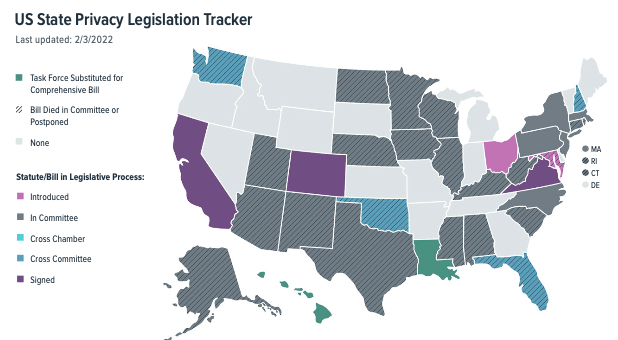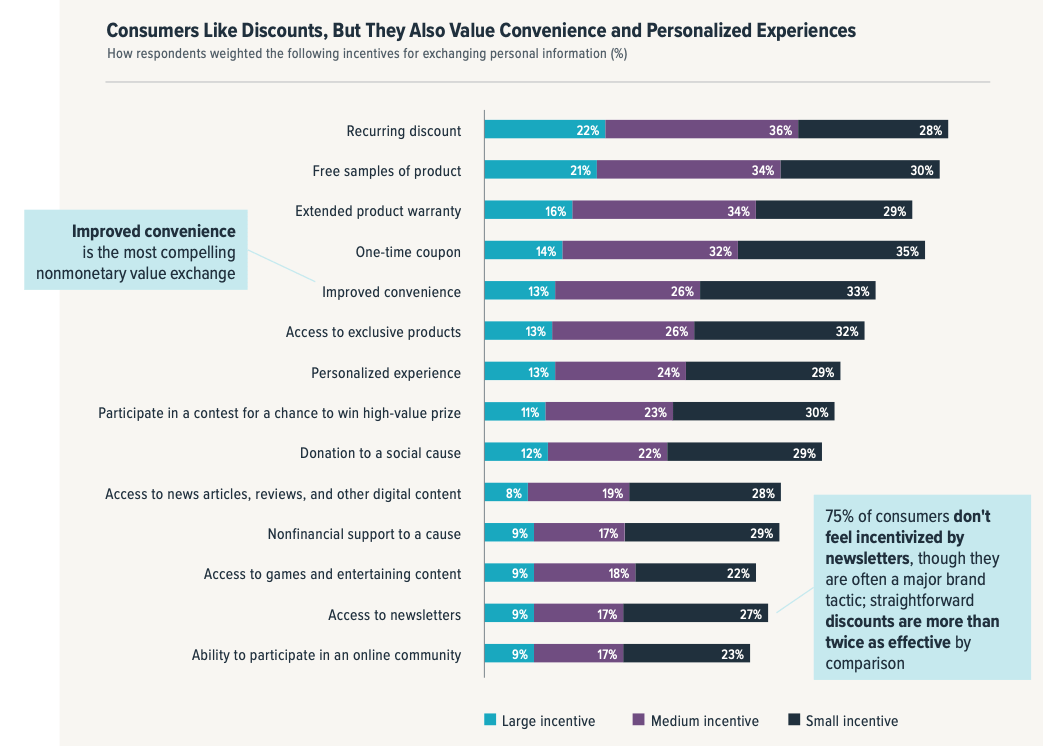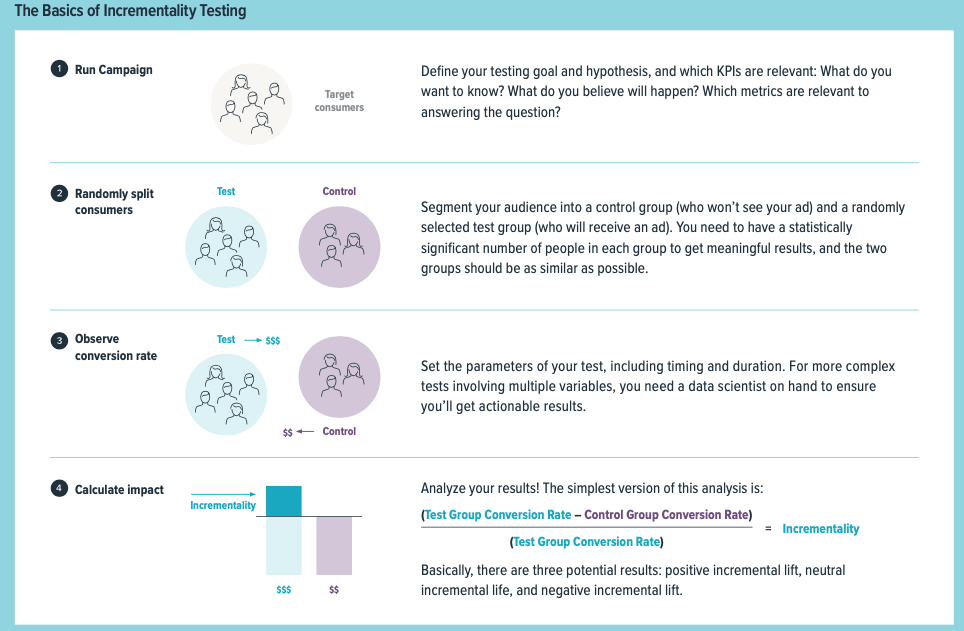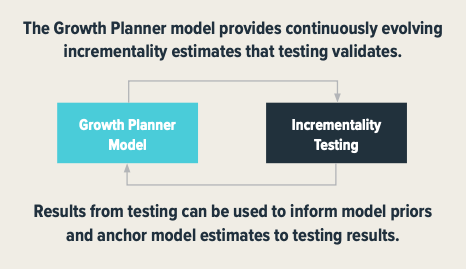Data privacy is no longer something marketers can consider as they see fit if they have the time or inclination or a company mission. As tech giants roll out privacy solutions and legislation gathers momentum at both the state and federal level, the ways brands are accustomed to targeting customers and tracking performance are changing quickly.
Those two crucial components of modern marketing are under fire. We’ll call the first one identity: how marketers use personally identifiable information (PII) and other signals to create audiences, target campaigns, and more. The second component is measurement. Insights driven by performance data are the primary way businesses evaluate what’s working and what’s not in their marketing strategy.
Together, identity and measurement create the feedback loop that we use to optimize marketing campaigns, allocate budget effectively, target the right audiences, and more. In short, the interplay between identity and measurement form the basis for what we know as performance marketing. And that feedback loop is breaking, fast.
Your marketing teams need to evolve, not just react, if you want to keep the competitive edge. It’s time to prioritize privacy compliance and get proactive about setting a new course so your business is ready for the future.
Marketing data restrictions are tightening: platform changes and legislation
Technology platforms are continuing to roll out radical changes to the ways marketers can use data to target customers and measure performance, and that’s not slowing down any time soon.
From Apple to Facebook, public battles and new privacy initiatives made for a rocky 2021. Some of the key announcements include:
- Apple launched iOS 14.5, including the new AppTrackingTransparency (ATT), which requires users to opt-in to data access by apps
- Facebook removed its 28-day attribution window and restricted marketers to a 7-day attribution window and moved to modeled conversions, which later proved to be underreported by ~15%
- Apple’s iOS 15 added new privacy features that mostly affected email marketing
- Google continued to develop privacy solutions in the Privacy Sandbox but announced that they were delaying the phase out of third-party cookies in Chrome until 2023 and replacing their Federated Cohort Learning of Cohorts proposal with Topics API
But it wasn’t only platforms that were targeting how marketers can use consumer data. In 2022, new privacy legislation at the state level will be going into effect in California, Colorado, and Virginia, while other states including New York, Florida, and Washington have active privacy bills in play.

Source: The New York Times
The California Privacy Rights Act (CPRA) in particular will expand and clarify the California Consumer Privacy Act (CCPA), addressing questions about personal Identifiable Information (PII) and data collection that were open to interpretation. California’s privacy laws are already the strongest in the country, and these changes, which will go into effect as law on January 1, 2023, strengthen limits on data sharing and how marketers can use sensitive personal data.
While it’s unlikely we’ll see federal legislation pass in 2022, lawmakers did introduce ‘The Banning Surveillance Advertising Act’ which seeks to prohibit advertisers from targeting ads based on personal data such as race, gender, and religion.
The days of wait-and-see-what-happens are over. Don’t just wait until you’re forced into compliance. If you’ve been depending on small adjustments and hope to keep the old way of using data to target audiences and measure performance, it’s time to get proactive if you want to set your business up for success and retain a competitive advantage in a privacy-first world.
A strong first-party data strategy is no longer negotiable for your business
At this point, you’ve probably heard that you need to invest in a first-party data strategy at least as many times as you’ve been told to eat your vegetables or get in 10,000 daily steps. That’s with good reason.
As third-party cookies die out, first-party data provides a viable alternative so you can continue to serve relevant ads to the right people. In fact, since it is intentionally and consensually shared, it’s both more accurate and can be the means to building a stronger relationship, based on trust, with your customers.
Since first-party data is collected on a brand’s owned channel, either passively through something like an IP address or actively through a form submission, benefits of your business has to earn access to that data directly, with the customer’s consent.

Source: Boston Consulting Group
That means investing both time and money into collection strategies, technology, and more. Brands have often not done the basic math to support first-party data strategy investment. You need to calculate the value of first-party data relative to customer lifetime value to understand what your business is willing to pay to acquire that information.
One of the most common ways brands capture first-party data is through discounts at the point of sale. But a mature first-party data strategy includes upper funnel campaigns where a two-way value exchange can occur: consumers can exchange their data for experiences, like interactive content, exclusive access, or support for a social cause.
There are three general types of first-party collection strategy to consider:
- Observation: Create onsite experiences that provide insight into customer behavior. Incentivize persistent login states, and allow marketers to connect upper-funnel content to conversions using more robust frameworks.
- Declaration: Build interactive content experiences that offer personalized product/service recommendations in exchange for information such as email addresses and cart completions.
- Even exchange: Target long-term relationship building and first-party data collection through rewards programs, loyalty points, VIP experiences, or promotions.
The good news is that you probably already have a fair amount of first-party data readily available in a point-of-sale or CRM system. In many cases, the information is already in a point-of-sale or CRM system. But it’s not enough to just have the data, you need to be able to use it.
You need to take control of your measurement and rely less on platforms
Brands that continue to depend on platforms such as Google and Facebook are no longer getting the full picture of their performance, and it’s only going to get worse. It’s time to take measurement into your own hands. If you’re relying solely on platforms, you won’t be able to understand the full picture of your performance.
So what can we do if we can’t trust deterministic attribution? Implement validation solutions like incrementality testing while taking advantage of useful platform tools like clean rooms that can help us without falling back into platform measurement dependence, so don’t throw the baby out with the bathwater.
Incrementality testing helps you understand the actual impact your ads are having by removing conversions that would have happened anyway. Think about it like this: if someone is served an ad on Facebook and makes a purchase, Facebook will attribute the sale to your ad. But what if that person was already going to buy? You’re not getting a totally accurate view of the impact your ads are having without removing those conversions.

Source: AppsFlyer
Understanding incrementality has always been an important part of a mature measurement approach, but it becomes crucial as we are forced to rely more and more on models and continue to struggle to understand cross-channel influence and attribution. Robust incrementality testing can help you validate modeled performance data and get a clearer picture of how your campaigns are affecting the full customer journey.
Because incrementality testing is slow to see results, comes at a cost to business goals (conversions, revenue), and measures a snapshot in time, we have turned to mixed media modeling (MMM) as a key part of the measurement equation in a privacy-first future.
A good MMM accurately predicts outcomes without utilizing individual data, but traditionally they were too slow to generate insights that were actionable in real time and focused on looking backward instead of predicting forward. We built a high velocity mixed media model called Growth Planner as part of our Polaris marketing platform to address both privacy challenges and actionability.
Growth Planner forecasts a client’s entire year to find the optimal investment of available budget to hit revenue targets, then tells our experts how to invest down to the specific tactic, channel, month/week/day. We make sure the model is working and keep improving it through rigorous ongoing incrementality testing.

In the end, you need to understand how your marketing is actually performing, and, more importantly, how it’s impacting business growth holistically. That will never happen if you stay reliant on platforms.
Change brings uncertainty, which can be scary. We get it. But change also brings new opportunities. Data privacy doesn’t have to be marketing doomsday if you’re prepared to embrace a new way of marketing in the future. But you have to start now if you want to capture the competitive advantage.







Responses